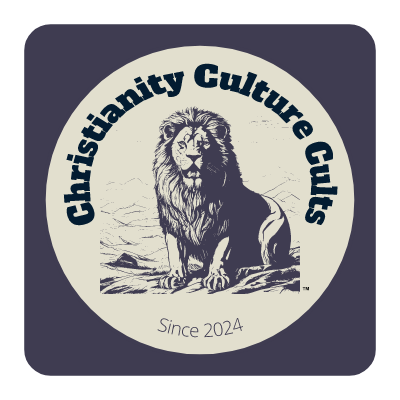1. Character and Personal Conduct
- Marriages and Polygamy:
- Muhammad married multiple women, including Aisha, who was reportedly very young. Critics argue this raises ethical concerns.
- The marriage to Zaynab bint Jahsh, the former wife of his adopted son Zayd, is seen by some as controversial and contrary to prior Arab customs.
- Treatment of Enemies:
- Muhammad’s order for the execution of the Banu Qurayza tribe’s male members and the enslavement of women and children following the Battle of the Trench is cited as evidence of harsh treatment.
- Acts of Violence:
- Critics highlight incidents such as the assassination of critics like the poet Ka’b ibn al-Ashraf and others as morally questionable actions for a prophet.
2. Prophetic Miracles and Signs
- Lack of Verifiable Miracles:
- Unlike other prophets, Muhammad’s miracles are primarily documented in Hadith literature rather than the Quran itself, leading to questions about their authenticity.
- Subjective Nature of the Quran as a Miracle:
- The claim that the Quran’s linguistic beauty is a miracle is seen as subjective and not universally compelling.
- No Supernatural Acts:
- Critics argue that the absence of widely recognized supernatural acts, like those performed by Moses or Jesus, weakens Muhammad’s claim to prophethood.
3. Ethical and Moral Teachings
- Warfare and Violence:
- Surah 9:5 and other verses instructing Muslims to fight non-believers are seen as promoting violence.
- Punishments and Sharia:
- Critics point to the prescribed punishments in Sharia law, such as stoning for adultery and hand amputation for theft, as evidence of an ethically problematic legal system.
- Treatment of Women:
- Verses such as Surah 4:34, which discuss the subordination of women and the permissibility of husbandly discipline, are viewed as endorsing gender inequality.
4. Historical Anachronisms and Inaccuracies
- Confusion of Historical Figures:
- The Quran mentions Haman, a court official of Pharaoh, which critics argue is historically inaccurate as Haman is a character from the Book of Esther, set in Persia.
- Alexander the Great (Dhul-Qarnayn):
- Surah 18:83-101’s depiction of Dhul-Qarnayn, often associated with Alexander the Great, contains anachronistic and legendary elements not consistent with historical records.
- Mary, Mother of Jesus:
- Critics note the apparent confusion between Mary (Miriam), the mother of Jesus, and Miriam, the sister of Moses and Aaron, as an anachronistic error.
5. Contradictions and Inconsistencies
- Contradictory Verses:
- Surah 2:256 states there is no compulsion in religion, while Surah 9:5 seems to contradict this by commanding fighting against non-believers.
- Predestination vs. Free Will:
- Surah 57:22 implies strict predestination, while other verses suggest human free will and accountability.
- Changing Revelation (Naskh):
- The concept of abrogation, where earlier verses are superseded by later ones (Surah 2:106), raises questions about the consistency of divine revelation.
6. Borrowing from Other Religions
- Biblical Parallels:
- Stories in the Quran closely parallel Biblical narratives, such as those of Noah, Moses, and Joseph, suggesting possible borrowing rather than original revelation.
- Apocryphal Sources:
- Certain Quranic stories, such as the seven sleepers (Surah 18:9-26), resemble Christian apocryphal tales rather than canonical scripture.
- Zoroastrian Influences:
- Critics argue that concepts like heaven and hell, angels, and the Day of Judgment show similarities to Zoroastrian beliefs.
7. Revelatory Process and Compilation
- Gradual Revelation:
- The Quran was revealed over 23 years, often in response to specific events, which critics argue reflects situational responses rather than a coherent divine plan.
- Compilation after Muhammad’s Death:
- The collection and standardization of the Quran under Caliph Uthman involved human decisions, raising concerns about its preservation and authenticity.
- Oral Tradition:
- The initial reliance on oral transmission before the written compilation introduces the possibility of errors and alterations.
8. Prophetic Legitimacy
- Muhammad’s Self-Claims:
- Critics argue that Muhammad’s claim to be the final prophet is self-serving and lacks external verification.
- Verification by Miracles:
- Unlike Moses or Jesus, Muhammad’s miracles are not universally recognized or verified by non-Islamic sources.
- Reliance on Personal Authority:
- Muhammad’s position as both religious and political leader could be seen as consolidating power rather than purely spiritual leadership.
9. Quranic Content and Structure
- Ambiguous Language:
- The Quran’s language is often complex and ambiguous, leading to multiple interpretations and sectarian divisions.
- Repetitive and Disjointed:
- Critics argue that the Quran is repetitive and lacks a clear, cohesive narrative structure, which they find inconsistent with divine literature.
- Problematic Verses:
- Verses that seem to condone violence, slavery, or inequality are seen as inconsistent with a perfect divine message.
10. Personal and Societal Impact
- Division and Conflict:
- Critics argue that Muhammad’s teachings have led to historical and ongoing conflicts, including sectarian violence within Islam and between Islam and other religions.
- Suppression of Dissent:
- The treatment of apostates and critics of Islam is seen as suppressing freedom of thought and religion.
- Cultural Practices:
- Certain cultural practices endorsed by Islamic tradition, such as female genital mutilation (though not explicitly mentioned in the Quran), are criticized for their harmful impact on society.
Conclusion
These arguments challenge Muhammad’s status as a prophet by raising questions about his character, the ethical and historical consistency of his teachings, the originality and coherence of the Quran, and the impact of his leadership on society. Each point is subject to debate, with Muslim scholars offering counter-arguments to defend Muhammad’s prophethood. Engaging with these arguments requires careful consideration of both historical and theological contexts.
